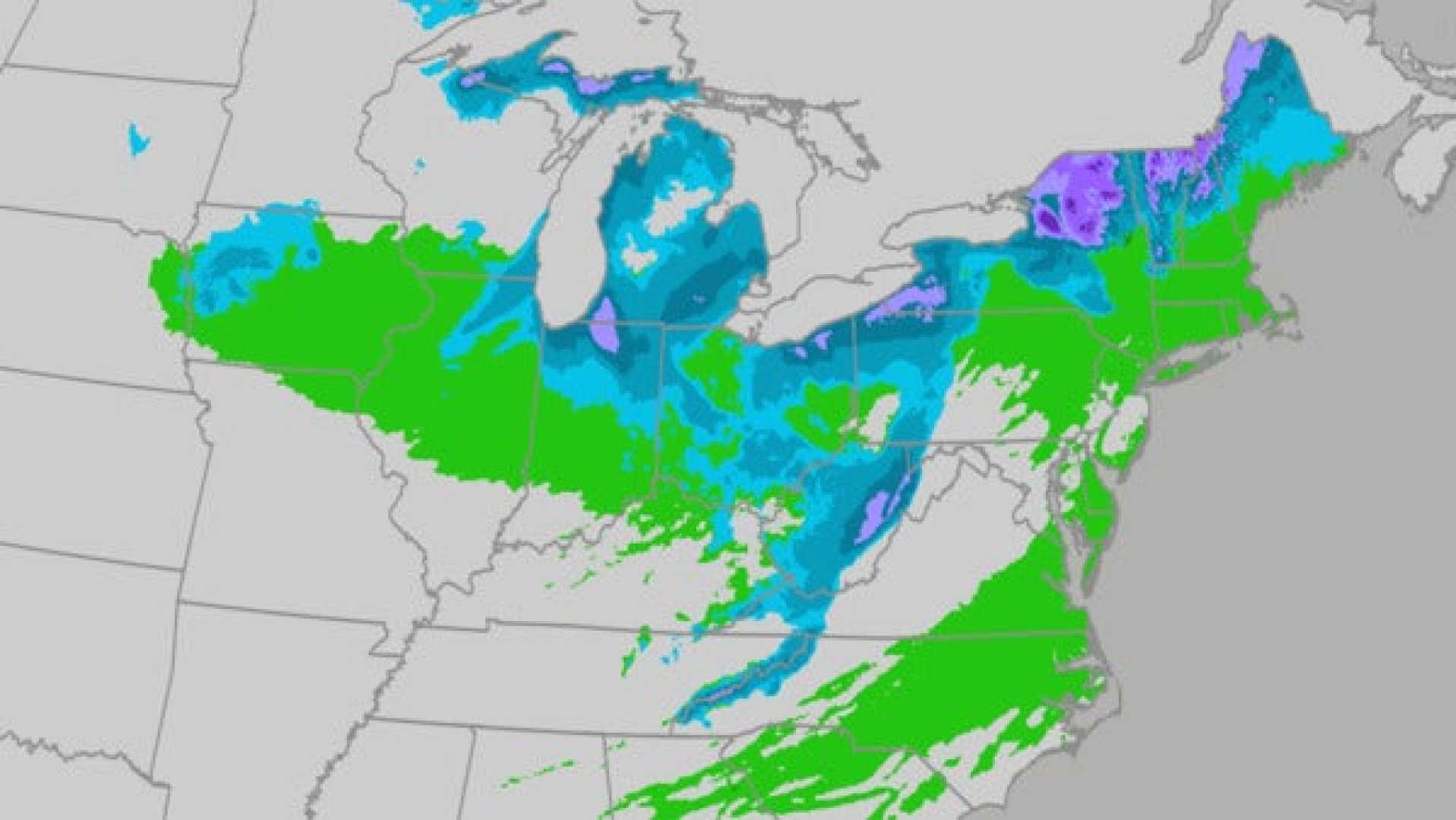News
First Snowfall Hits Northern US After Cold Front Moves In

CHICAGO, IL — Parts of the Midwest and East Coast are bracing for their first snowfall of the season as a cold front sweeps through the region. The National Weather Service forecasts bands of lake-effect snow that could create slippery travel conditions in areas such as the Great Lakes snowbelts and northern New England.
This weather change is attributed to a strong, albeit brief, cold outbreak that is projected to impact the Midwest, South, and the East Coast. Initial reports from Saturday indicated snowfall accumulations of 1-6 inches in parts of the Dakotas, Minnesota, and Iowa, leading to minor travel delays.
By early Sunday morning, wet snow could reach eastern Iowa and parts of the western Great Lakes, affecting cities like Milwaukee and Detroit. The snow is expected to become more significant later in the day as lake-effect snow bands develop over western Great Lakes snowbelts extending into parts of Michigan and Indiana.
From Monday to Tuesday, lake-effect snow may continue across the Great Lakes before easing from west to east. Areas such as the Adirondacks in upstate New York and parts of northern New England could see leftover snow.
While some regions may experience light accumulations of an inch or less, others, especially in the Great Lakes snowbelts, could see several inches by Tuesday. Meteorologists warn that these accumulations could create slushy and hazardous road conditions, particularly at night.
The typical first snowfall for many areas occurs in November, with Buffalo usually seeing its first snow around November 8, followed by Chicago on November 18 and Detroit on November 19, based on historical averages.
Jonathan Erdman, a senior meteorologist, emphasized that the season’s first snowfall can often catch drivers unprepared, highlighting the importance of being cautious when venturing out on potentially slick roads.
The cold outbreak is expected to bring temperatures that feel more characteristic of mid-December, and residents across the central and eastern U.S. should prepare for potentially dangerous driving conditions and drop in visibility due to the snow.












